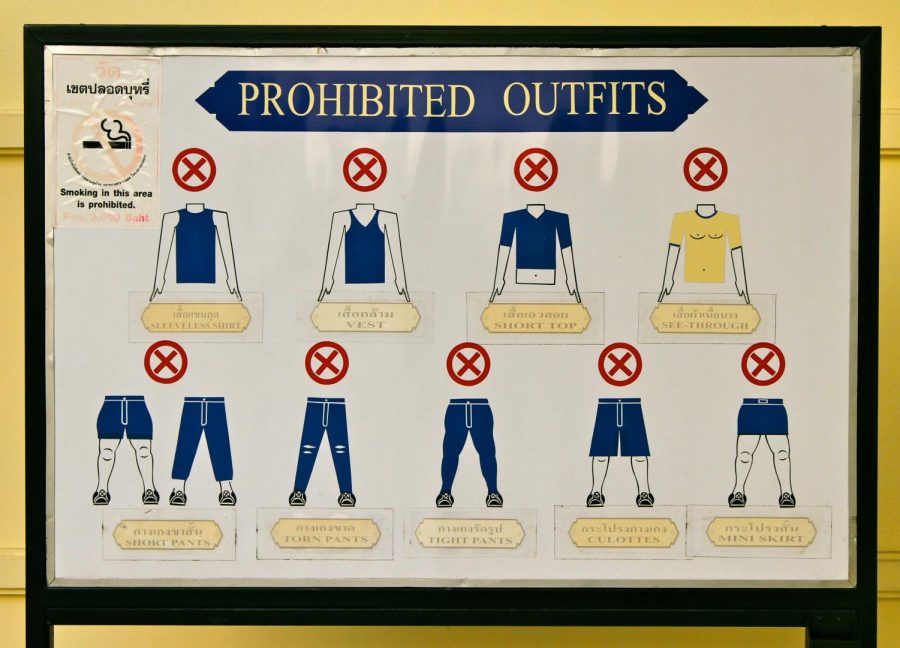Should We Keep Enforcing Dress Codes and Are They Sexist?
September 28, 2021
Dress codes have been around since 1969 when the U.S Supreme Court established the first dress code law. Students would have to wear black armbands in school as a way to protest the Vietnam War. Since then, dress codes have grown and evolved from “does this go above or below your fingers?” to “go to the office, your skirt is too short!” Lately, there have been protests and debates about whether dress codes are helpful or not and whether they protect students or sexualize them. Dress codes seem to be more aimed at women rather than men; girls can’t wear a top that shows a little of their belly, but men can wear shirts revealing their chest and get away with it.
A TikToker named Drew Jarding or drooscroo made a series of him wearing items that he would get dress coded for if he were a girl. He did this to show that dress codes are sexist and that they discriminate against women. He did this for four days; he didn’t get dress-coded or stopped once for what he wore that week on the first day. The next part of this series shows him wearing a crop top and shorts. His friend was wearing leggings and a crop top. They both were in front of multiple teachers simultaneously, and only one of them got written up. It was his female friend. After ten days, he didn’t get dress-coded once, but three of his female friends did, wearing the same thing as him.
In this series, it is clear that he could have possibly had some advantages his friends didn’t because he is a male. This series is just a little bit of proof that dress codes target women more than men. There have also been protests in many schools against the dress code. One example was Rancho Campana High School in Camarillo, California. Rancho Campana had its first dress code protest yesterday. Many women wore clothes that broke the dress code with either signs or writing on their bodies. For example, a girl who wore a crop to write “stomach” on her midriff and another wore a tank top and PJ shorts and wrote, “my body, my choice” on each leg. Some men even participated by wrapping their shirts to make them look like crop tops or revealing shirts.
Protests like these can help show how dress codes target women and focus on their outfits rather than their class. When a student gets dress-coded, that could come with getting pulled out of class, walking to the principal’s office, and getting a 10 minute or longer lecture about dressing appropriately. That takes time out of a student’s class period and learning time which is the whole reason they are in school. They could also get an out-of-school suspension for a period of time, making them miss even more classes. Superiors telling a student they have to wear a hoodie over the tank top might also give them the impression that their bodies are inappropriate and explicit. Sometimes a dress code needs to be broken due to the weather. If it’s 100 degrees outside, a student isn’t going to want to wear jeans with no rips and a long-sleeved shirt. If a student is wearing a tank top with jean shorts, and they were to get dress-coded and have to wear a hoodie and sweats all day, they could overheat.
Dress codes target females and could risk their education and health. Some schools have less strict dress codes or no dress codes at all. Schools should work on their dress codes and make them more equal for females and males. So while dress codes aren’t beneficial, they should at least be there to some extent to make sure students have clothes on and make sure students are not promoting violence or drugs as well.




